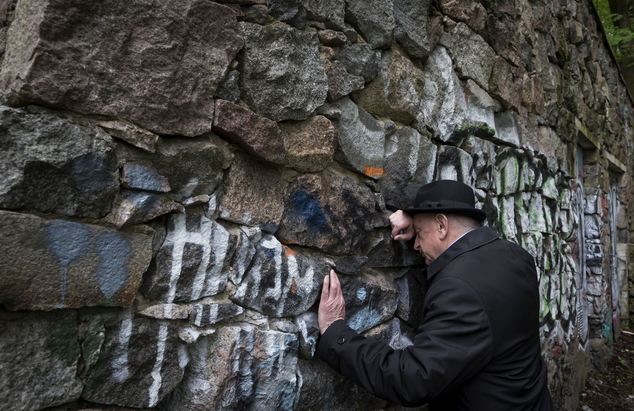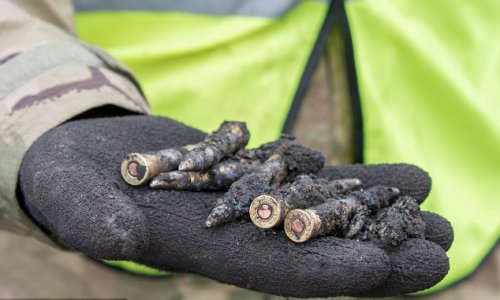An investigation has been launched after a chance discovery revealed that tombstones from a Jewish cemetery were used to build a power substation in the 1960s.
Vilnius city officials now want to tear the structure down and return the desecrated tombstones to Lithuania's tiny Jewish community which was all but wiped out during the Holocaust.
The chilling discovery was made earlier this month when a local man spotted that dozens of the building's stones had inscriptions in Hebrew or Yiddish and shared his find on social media.
Archaeologists confirmed this week that the electrical substation was built with tombstones stolen from the Jewish cemetery across the road.
Now officials have launched an investigation to find out if other Jewish tombstones were used as building materials during the Soviet occupation.
Resident Giedrius Sakalauskas, who made the discovery, said he had always thought there was something strange about the graffiti-sprayed, bunker-like structure in a leafy area outside the centre of Vilnius, the capital city of Lithuania.
He said: 'Why build an electrical substation with granite blocks instead of regular bricks?
'I touched the stones and I realized that they're really gravestones,' Mr Sakalauskas told The Associated Press.
He said he had a hunch about where they came from - across the street a Jewish cemetery once stood but was demolished in the 1960s when Lithuania was part of the Soviet Union.
Mr Sakalauskas posted pictures of his discovery on social media and inadvertently set off an emotional discussion about a dark chapter in Lithuania's history that did not end when Nazi occupation was replaced with a Soviet one in 1944.
Lithuania's once-vibrant Jewish community was almost annihilated by the Nazis during World War Two and the few who survived found little sympathy from their new communist rulers.
'Hitler wanted to destroy Jews physically,' said Simonas Gurevicius, whose family escaped the Holocaust by fleeing to Russia and returned to Lithuania after the war.
'Stalin came, and he wanted to destroy the whole memory of the Jewish people, making sure that nothing will stay.'
The etchings on the substation are hard to spot unless you know what you are looking for as they are only visible in the gaps where the slabs overlay each other.
Mr Gurevicius said: 'For sure, this is a very sad feeling. It's difficult to read now.'
Vilinius Mayor Remigijus Simasius said he has asked the utility companies that own the substation, which feeds electricity to thousands of homes, to find a way to move the tombstones to a 'proper resting place.'
The discovery has raised uncomfortable questions over how many other structures were built with recycled Jewish tombstones - and why the issue is only gaining attention now, 25 years after Lithuania declared independence.
(dailymail.co.uk)



www.ann.az
Follow us !











